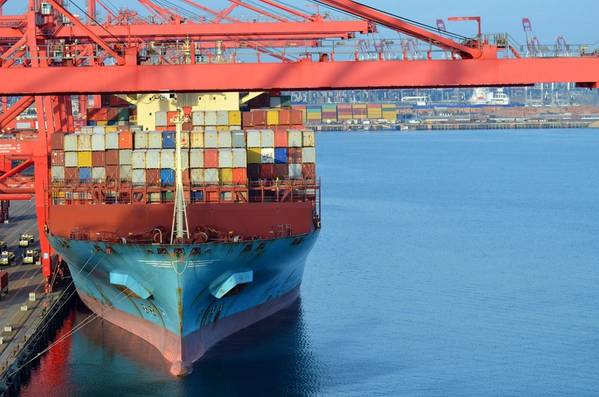
A seaport never sleeps. Cargo shipping is vital for keeping supply chains moving and the country fed and well-supplied during the current pandemic. Port employees have continued working throughout the pandemic. They’ve not shut down or decreased hours like so many industries have. Another industry that has never shut down is human trafficking. In fact, as much of the world has turned its attention to the COVID-19 pandemic—the illegal crime of human trafficking has been able to flourish.
Although it is quietly hidden, human trafficking thrives during times of chaos and vulnerability. The maritime community can benefit from an improved understanding of human trafficking and learning how employees at seaports can play a key role to helping vulnerable people.
Victims of human trafficking include children, women and men who are subjected to sexual exploitation or forced labor through the use of force, fraud or coercion. At seaports in particular, traffickers can take advantage of discrepancies in maritime law in order to exploit their victims, making a tremendous profit.
It is easier for traffickers to operate at sea because ships can fly flags of convenience, allowing them to operate under the rules of a country with lenient labor laws. Crew members can be forced to work long hours, manipulated into extending their contracts, be paid less than they agreed to work for, or their wages are sometimes withheld entirely.
Incidents of human trafficking can also occur in the cruise industry, where ship workers are sometimes paid by a third-party contractor who can withhold pay or pay workers less than they expect to receive. Some cruise companies will even hold employee passports, preventing workers from disembarking while at port. Since these labor trafficking victims work mostly at sea, the only place they are likely to receive help is when a ship docks at a port.
It is not just labor trafficking that seaports need to watch for. Sex trafficking can happen at ports as well. Survivors of human trafficking report that sailors can be sex buyers. In these instances, the sex buying can happen at port facilities or onboard docked ships. The U.S. Department of Justice Human Trafficking Task Force reports that 83% of U.S. sex trafficking victims are U.S. citizens, and that the average age a victim is first exploited for commercial sex is between 12-14 years old.
Preventing labor and sex trafficking is becoming more of a priority for the Department of Transportation (DOT) and the Department of Homeland Security (DHS). This year, the DOT launched a new national pledge program against human trafficking, where they’ve asked transportation leaders to commit to helping end human trafficking. Signing the pledge includes committing to train employees to recognize and report the signs of human trafficking. So far, more than 200 groups—including airports, transportation authorities and seaports, have joined the DOT’s pledge. And in January 2020, DHS released a new report outlining their commitment to ending human trafficking. This report summarized their priorities for the next five years, including plans for prevention, protection, prosecution and partnership—which includes key security checkpoints.
Seaports are a critical checkpoint for stopping human trafficking. Employees working at ports can be turned into advocates for human trafficking victims when they are properly trained to know how to spot a potential trafficking situation. As more ports increasingly recognize their interdependence with the local community, it will serve ports well to recognize that they have a valuable asset in the fight against human trafficking—their workers.
When port employees receive human trafficking awareness training, they can learn how to spot a potential trafficking situation happening at maritime facilities and know how to report it quickly and safely. This can allow more exploited people the chance to escape their traffickers and rebuild their lives.
Even as port leaders are grappling with an unsure economy, now is not the time to postpone employee training. The current pandemic is making more people vulnerable in the wake of massive economic and social disruption. According to the anti-trafficking group Polaris, the number of human trafficking cases handled by their hotline in the month of April 2020 compared to the time leading up to the pandemic and the same month in 2019, showed a 40% increase during the COVID-19 pandemic. This shows that traffickers are not slowing down or stopping. They are busy recruiting and grooming victims while so many people are vulnerable.
But with a diligent workforce, ports can do much more than simply administer facilities and provide services. Seaports can become safe places that can make a difference in helping protect the greater community by providing employee training opportunities that can help victims in need. Seaport human resource departments can play an important role in ensuring that the right people are trained to understand human trafficking.
The nonprofit organization Businesses Ending Slavery and Trafficking (BEST) created a short, 30-minute, video-simulated training specifically for port employees. This new training is labeled Ports to Freedom, and it can help front line employees and managers learn the indicators of human trafficking and how they can report it to the proper authorities. When ports begin providing training, it can help save lives by generating more eyes and ears looking out for the warning signs of human trafficking at seaports.
The author
Katie Amodei is the communications manager for the nonprofit, Businesses Ending Slavery and Trafficking (BEST). BEST aims to expand human trafficking prevention training to more seaports. More information about Ports to Freedom can be found here.



